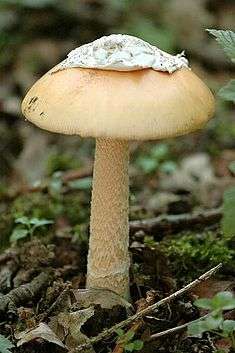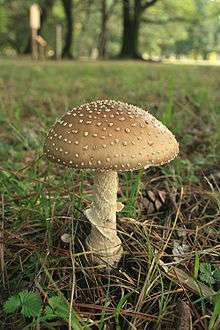Amanita porphyria
Amanita porphyria, also known as the grey veiled amanita, is a fairly common, inedible basidiomycete mushroom of the genus Amanita found in Europe and North America.
Description
The cap is hemispherical when young, later flat. It is 4–10 cm in diameter, greyish brown to brown in colour, usually smooth, sometimes with grey patches. The gills are white and free from the stem. The spores are white. The stem is 5–12 cm high and 1-1.5 cm thick and has a grey to black ring. The stem has a basal bulb. The flesh is white with a smell of radish. A. porphyria usually grows near coniferous trees.
Uses
A. porphyria is not suitable for consumption. It is considered slightly poisonous and, more importantly, can easily be confused with much more poisonous species such as the Panther cap (Amanita pantherina).
See also
External links
![]() Media related to Amanita porphyria at Wikimedia Commons
Media related to Amanita porphyria at Wikimedia Commons
References
- E. Garnweidner. Mushrooms and Toadstools of Britain and Europe. Collins. 1994.

